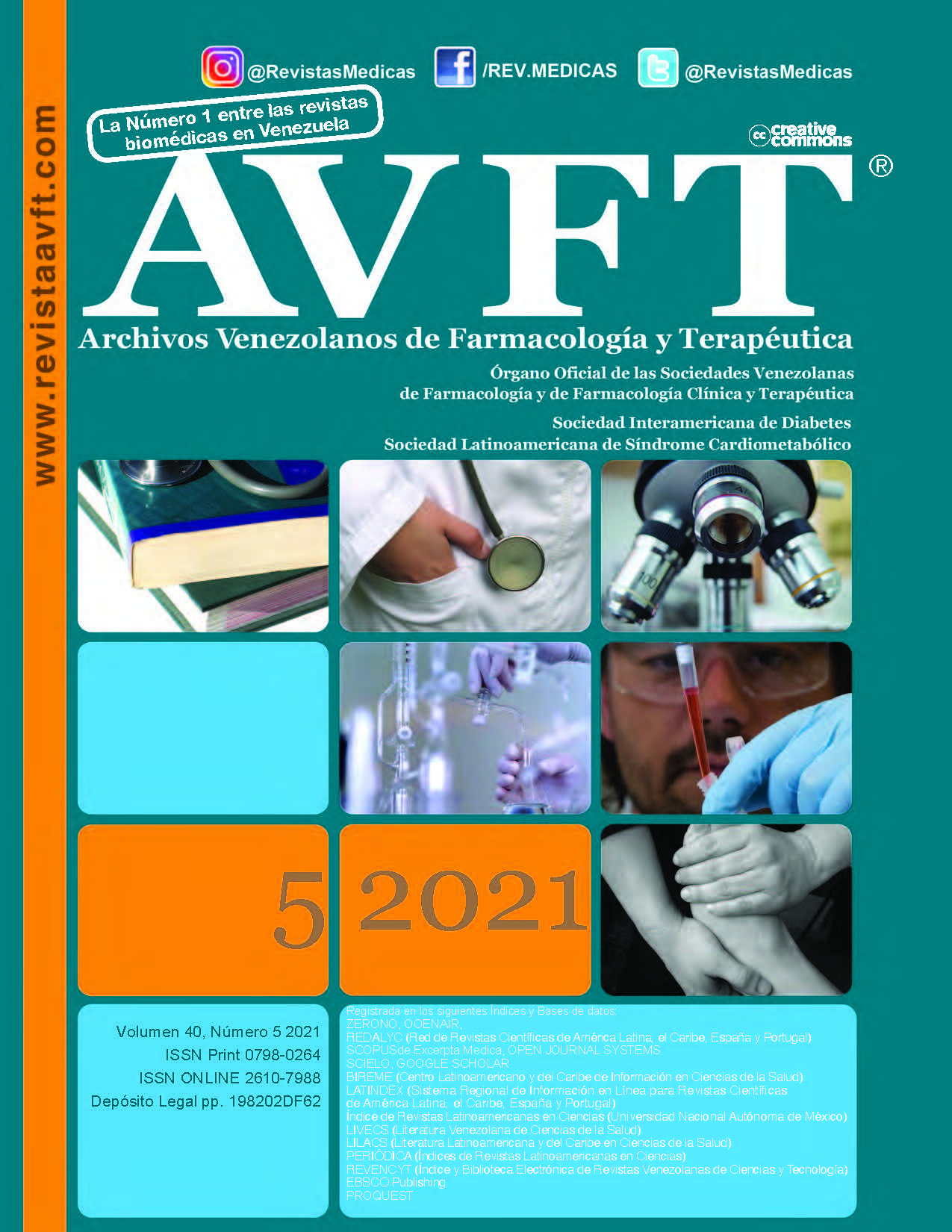Características microbiológicas de pacientes con urocultivos positivos del Hospital Universitario del Rio, Ecuador
Abstract
Objective: To evaluate the microbiological characteristics of patients with positive urine cultures at the Hospital Universitario del Rio, Ecuador. Materials and methods: An observational, retrospective, and descriptive study was carried out in patients undergoing a urine culture, in the microbiology service in Intensive Care Unit (ICU) for adults, pediatric ICU, outpatient, and hospitalization service during 2018, the clinical data were obtained of the medical records department. Results: Of the 395 positive reports, the most common germs among the gram negative were Escherichia coli with 69.6% (n=275), among the gram positive Enterococcus faecalis with 3% (n=12), and among the fungal agentes Candida albicans with 6.3% (n=25). Regarding antimicrobial resistance, gram negative germs were mainly resistant to quinolones (47.8%; n=161) and cephalosporins (26.4%; n=89), the most common resistance markers being resistance to quinolones (33.5%; n=113) and extended spectrum beta-lactamases (ESBL) (19.9%; n=67). On the other hand, gram positive germs were mainly resistant to oxacillin (20%; n=5), the most common resistance markers being resistance to quinolones (36%; n=9) and Staphylococcus methicillin resistance (20%; n=5). Conclusion: The microbiological reports at the Hospital Universitario del Río, Ecuador, were predominantly in women, in subjects older than 20 years of age, and with outpatient management; Escherichia coli, Enterococcus faecalis, and Candida albicans were the most frequently isolated germs, with a high resistance to quinolones.
Keywords: infection, culture, epidemiology, antimicrobial resistance.
Downloads
References
Tan C, Chlebicki M. Urinary tract infections in adults. Singapore Med J. 2016; 57(9): 485–490.
Flores-Mireles AL, Walker JN, Caparon M, Hultgren SJ. Urinary tract infections: epidemiology, mechanisms of infection and treatment options. Nat Rev Microbiol. 2015; 13(5): 269–284.
INEC. Compendio Estadístico. Quito: Instituto Nacional de Estadísticas y Censos, Salud; 2016.
Chenoweth CE, Gould CV, Saint S. Diagnosis, management, and prevention of catheter-associated urinary tract infections. Infect Dis Clin North Am. 2014;28:105–119.
Medina M, Castillo-Pino E. An introduction to the epidemiology and burden of urinary tract infections. Ther Adv Urol. 2019; 11: 1756287219832172.
Orrego C, Henao C, Cardona J. Prevalencia de infección urinaria, uropatógenos y perfil de susceptibilidad antimicrobiana. Acta Medica Colombiana. 2014; 39 (4): 352-358.
Grandez J, Pichardo R, Corrales E, Olortegui R, Valencia C, Lucero P, et al. Situación del mapeo microbiológico de urocultivos en un Hospital Referencial de Perú 2013-2015. Revista de la Facultad de Medicina Humana. 2018; 18(1): 45-51.
Pinzón M, Zúñiga L, Saavedra J. Infección del tracto urinario en niños, una de las enfermedades infecciosas más prevalentes. Rev. Fac. Med. 2018; 66 (3): 393-398.
Capozzi E, Mobili D, Kornett A, Perdomo M. Agentes etiológicos de infecciones urinarias en adultos mayores de un centro de salud del estado Carabobo, Venezuela. Kasmera. 2016; 44(1): 35-43.
Mayorga F. Perfil de resistencia y sensibilidad antimicrobiana en bacterias aisladas en urocultivos de usuarios que acuden al laboratorio de campus médico Unan-León. 2013-2014. Repositorio Digital de la Universidad Nacional Autónoma de Nicaragua. 2017: 1-67.
Aguinaga A, Gil A, Mazón A, Álvaro A, García J, Navascúes A, Ezpeleta C. Infecciones del tracto urinario. Estudio de sensibilidad antimicrobiana en Navarra. An Sist Sanit Navar. 2018; 41 (1): 17-26.
Storme O, Tirán-Saucedo J, Garcia-Mora A, et al. Risk factors and predisposing conditions for urinary tract infection. Ther Adv Urol. 2019;11:1756287218814382.
Paul R. State of the Globe: Rising Antimicrobial Resistance of Pathogens in Urinary Tract Infection. J Glob Infect Dis. 2018; 10(3): 117–118.
Ahmed SS, Shariq A, Alsalloom AA, et al. Uropathogens and their antimicrobial resistance patterns: Relationship with urinary tract infections. Int J Health Sci (Qassim). 2019; 13(2): 48–55.
Leguizamón M, Samudio M, Aguilar G. Sensibilidad antimicrobiana de enterobacterias aisladas en infecciones urinarias de pacientes ambulatorios y hospitalizados del Hospital Central del IPS. Mem Inst Investig Cienc Salud. 2017; 15(3): 41-49.
Gutiérrez F. Perfil microbiológico y resistencia bacteriana antibiótica de los pacientes con infección del tracto urinario hospitalizados y de consulta externa en EL Hospital Nacional María Auxiliadora durante el año 2018. Repositorio Digital de la Universidad Privada San Juan Bautista. 2019: 1-63.
Downloads
Published
How to Cite
Issue
Section
License
Copyright (c) 2023 AVFT – Archivos Venezolanos de Farmacología y Terapéutica

This work is licensed under a Creative Commons Attribution-NonCommercial-NoDerivatives 4.0 International License.




